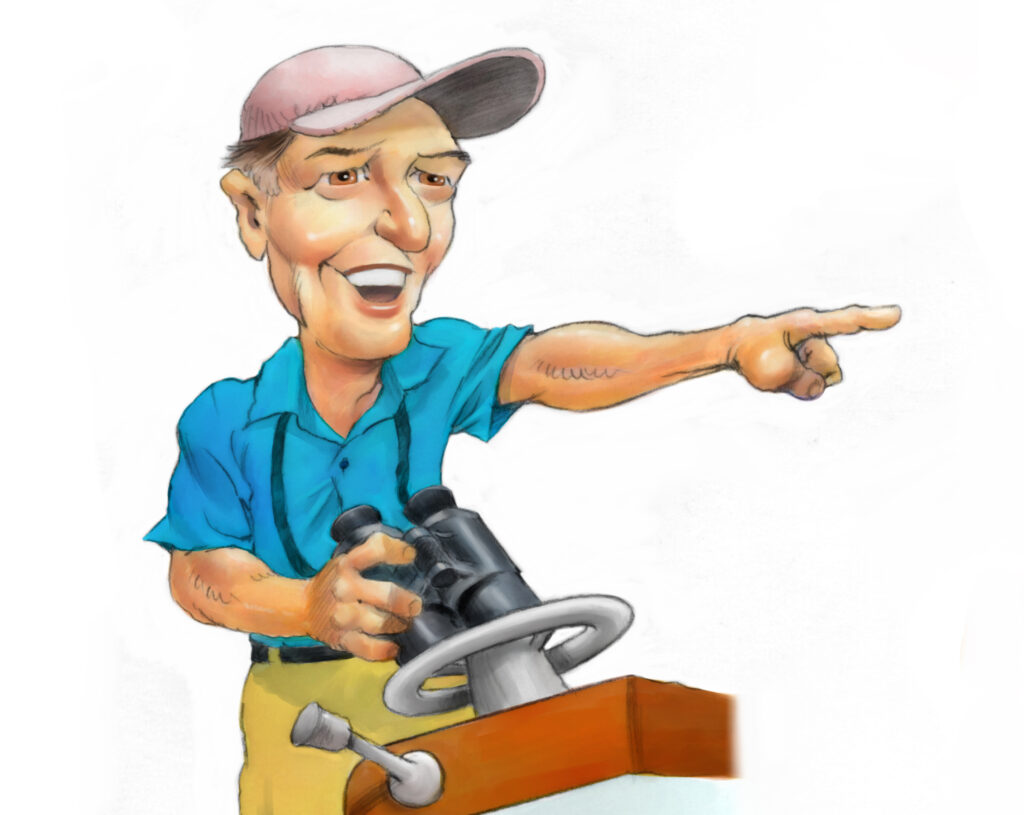The Evolution of Outboard Power
Over the last five to 10 years, the range of vessel types and sizes with outboard propulsion has grown significantly. You would be hard-pressed to find a brand in the recreational segment that doesn’t offer something with outboard power. This includes day boats, cruisers, go-fasts, and just about anything else, including our fishing boats. I find it intriguing how fully outboards have taken over the market in mid- to large-size recreational boats.
Outboards: Quiet, Reliable, and Powerful
Long gone are the days where outboards offered little power, were unreliable, and ran loud. With the significant improvements the manufacturers have made over the years, it is not surprising how their use has greatly expanded. Outboards are now incredibly quiet and reliable. They offer significantly higher power-to-weight and power-to-volume ratios as compared with inboard diesels. Because of this, we can stack them up across the transom to achieve high total installed power values. They offer a large range of powering options and now include neat features like joystick operation. And outboards are as easily serviced as they are accessible. Furthermore, let’s not forget that hanging our engines off the stern creates significantly more interior usable space instead of having diesels in there.
Table of Contents

Trade-offs: Fuel Efficiency and Access
On the other hand, outboards do present some not-so-great qualities (like everything, there are tradeoffs). Fuel efficiency is one of these. The difference varies, but one could expect 20% to 30% better fuel efficiency from diesel versus gas (for equivalent power). This adds up on boats that log heavy hours—and helps to offset the lower initial cost of the gasoline motor. Another inherent negative is that obviously, with outboards across the stern, access to the water is compromised. They also are in the way when fighting fish and create significant line fouling opportunities.
Innovations to Overcome Challenges
But some designers and builders are getting around some of these challenges. Some boats have outboards that are covered. This hides the engines while creating a cleaner stern area on deck. There are also products available that allow for an actuated swim platform aft of the motors. Another feature that has become somewhat standard is flip-down bulwarks, which open up added deck space with unimpeded access to the water. This helps get around the access issue with outboards.

Efficiency and Performance
Hydrodynamically, the lower unit of the outboard motor provides an efficient means of putting power into the water. The horizontal thrust improves overall propulsive efficiency, and the flow-friendly hub in front of the prop helps maintain mostly clean flow into the blades. Also, as compared with inclined shafts, appendage drag is greatly reduced. Turning is more efficient as well due to the vectored thrust created with the turning propellers. So at higher speeds, when done correctly, outboards can result in overall efficiencies that rival stern drives, waterjets, and surface drives. Transport efficiency is a general measure of a craft’s efficiency given its weight, installed power, and top speed. Trial factor can be thought of as an indicator of this variable and how the boat compares with the state-of-the-art. So trial factor can be used as a direct comparison for performance of different types of propulsors. Here are some examples (assuming equivalent installed power and weight):
Optimal Placement and Hydrodynamics
- • Incline shafts ~ 0.8~0.9
- • Waterjets ~ 0.95~0.99
- • Surface drives ~ 0.9~0.97
- • Outboard motors ~ 0.9~0.99
Add in the use of dual, counter-rotating propellers (available on some motors), and efficiencies go even higher. Also, outboards allow for stepped hull geometry, yet another way to increase efficiency at high speed (with other tradeoffs not discussed here). The hull form and transom geometry must work in concert with the placement of outboard motors. Some hulls have an overhang built into the transom (creating an arrangement much like a bolt-on bracket). This has become commonplace as it creates more deck space with the engines tilted up. Lengths of overhang vary greatly, and too much overhang is not desirable. Height of the engines, relative to the hydrodynamic transom, is critical. Guidelines exist for this to assure that the anti-ventilation plate is properly located relative to the water surface. This directly places the propellers relative to the water surface as well. Care should be taken in this area of the hull to ensure optimal performance, and there are several variables to be considered.
The Expanding Role of Outboards
Outboard engines have established themselves as a go-to propulsion option for many different types of boats (recreational, commercial, and military), including those above 60-feet LOA. And relatively recently, new options have become available with outboards including diesel, electric, and even diesel-electric hybrid power plants. Diesel inboards aren’t going away any time soon—especially in our mid-to-large size sportfishing yachts. But the outboard revolution is upon us, and I expect it to only get bigger as manufacturers continue to improve their technology and expand their power range. Designers will continue to figure out inventive ways to integrate these exciting offerings.

Conclusion
The outboard revolution continues to gain momentum as manufacturers improve technology and expand their offerings. Stay ahead of the curve by exploring more insightful articles on boat propulsion trends and innovations. For the latest updates in marine technology, subscribe to our publication and join us on the journey toward a more efficient, powerful, and innovative boating future.

About the Author: “Chris Swanhart transitioned from the aerospace sector to the marine industry early in his career, embarking on a journey that has spanned over two decades. With an unwavering commitment to fostering enduring relationships with renowned yacht builders worldwide, he has overseen numerous groundbreaking projects. Chris’s extensive portfolio encompasses the management of various new designs and builds, ranging from patrol and rescue vessels to production boats and luxurious custom sportfishing yachts. His expertise lies in crafting designs that prioritize cutting-edge high-performance hydrodynamics, innovative hull forms, and robust structures. Chris has been a contributor for InTheBite Magazine since 2020 and can been read in every issue with his Behind The Design article.”
Don’t Forget to Check Out Our Sportfishing Job Board! Did You Know? It’s the perfect platform for seeking skilled captains and mates. Whether you’re on the hunt for your dream team or looking to join one, your next big adventure begins here. Explore the opportunities now! Click Here
Dive Deeper into the World of Sportfishing
Unlock Exclusive Savings: Enjoy 50% Off Your Subscription!
Are you ready to explore the thrilling world of sportfishing from the comfort of your home? Subscribe now and embark on a journey filled with captivating stories, expert insights, and insider tips. Choose between our digital or print edition and secure an incredible 50% discount on your subscription.
Subscribe today and get ready for an adventure like no other. Click here to subscribe and elevate your sportfishing experience with InTheBite Sportfishing Magazine.















